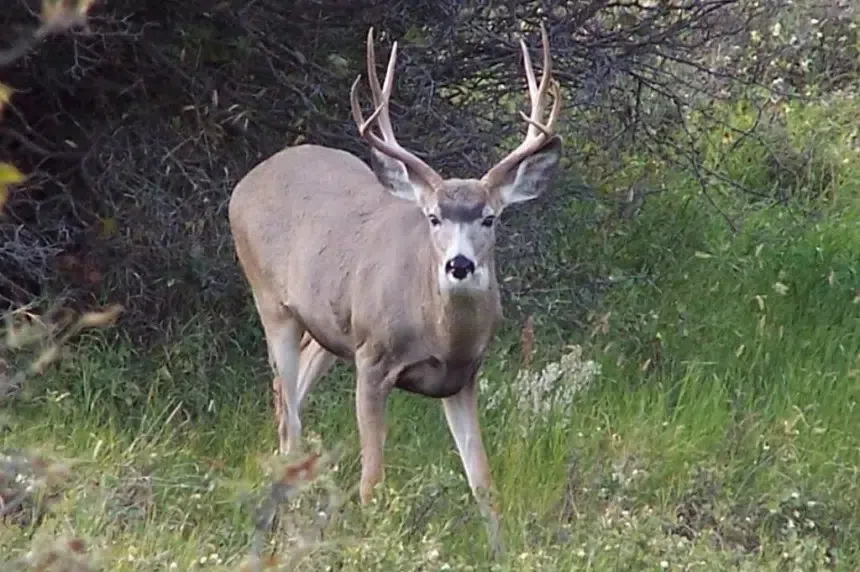Wildlife may become a more common sight in Saskatoon as heatwaves force animals to look for shelter in urban areas.
Moose sightings have not been uncommon in Saskatchewan’s biggest city, along with foxes visiting residential areas and coyotes running around Costco parking lots.
Regional Wildlife Ecologist for the Saskatchewan Ministry of Environment, Leanne Heisler, told 650CKOM that it is not uncommon to see wildlife enter the city or its parks to find food and shelter.
“They might be looking for shelter like shrubs and trees. Golf courses are great for that kind of thing. Not a lot of people are around and usually there is quite a bit of cover. Same with a cemetery.
“Any weather events that creates stress for an animal, they are likely going be moving around looking for food and shelter,” Heisler said.
She said the recent heat might be one reason for an increase in the number of animals and different species seen in urban centres.
Read more
- Leave young animals alone, environment ministry says
- Funding woes threaten future of Living Sky Wildlife Rehabilitation
So what are the best ways to stay safe if you have an unexpected encounters with wildlife in an urban area?
“Stay calm and to keep your distance from them. You can make a little bit of noise, so that they know you’re there and avoid approaching them… Avoid feeding them.”
Heisler said people who do meet or see wildlife in the city limits can report it.
“Animals like moose, or large predators like cougars and black bears … animals that might pose a public safety risk, you can call our tip line at 1-800-667-7561 or you can call a local conservation officer. If it is an emergency, like if that public concern has been realized, then dial 9-1-1.”
“If you’re concerned about nuisance wildlife, like raccoons getting into your bird feeders or deer eating your landscaping, feel free to call the Ministry of Environment general inquiry line (1-800-567-4224).”
When asked about the common sightings of coyotes in Costco parking lots, Heisler wanted to remind people that these creatures are not like dogs and should not be approached.
“Coyotes in urban centers, even though they are there and around people pretty regularly, they are still wild. The best thing to do would be to keep your distance from them,” she said.
“When we start feeding animals like that, we run the risk of habituating them to a point where they become aggressive with people if they don’t get what they are looking for, which is usually food.”
Heisler said that regardless if an animal is wild or not it is important that people know the signs of rabies.
Read more
- Leave young animals alone, environment ministry says
- Funding woes threaten future of Living Sky Wildlife Rehabilitation
“Animals with rabies will be typically very aggressive, they will be foaming at the mouth. The best thing to do in those cases is to leave the area immediately and call the tip line.”
Anyone exposed to an animal suspected to have rabies should call 811 or their local public health office. Sightings of any animal suspected to have rabies should be reported to 1-844-772-2437.











